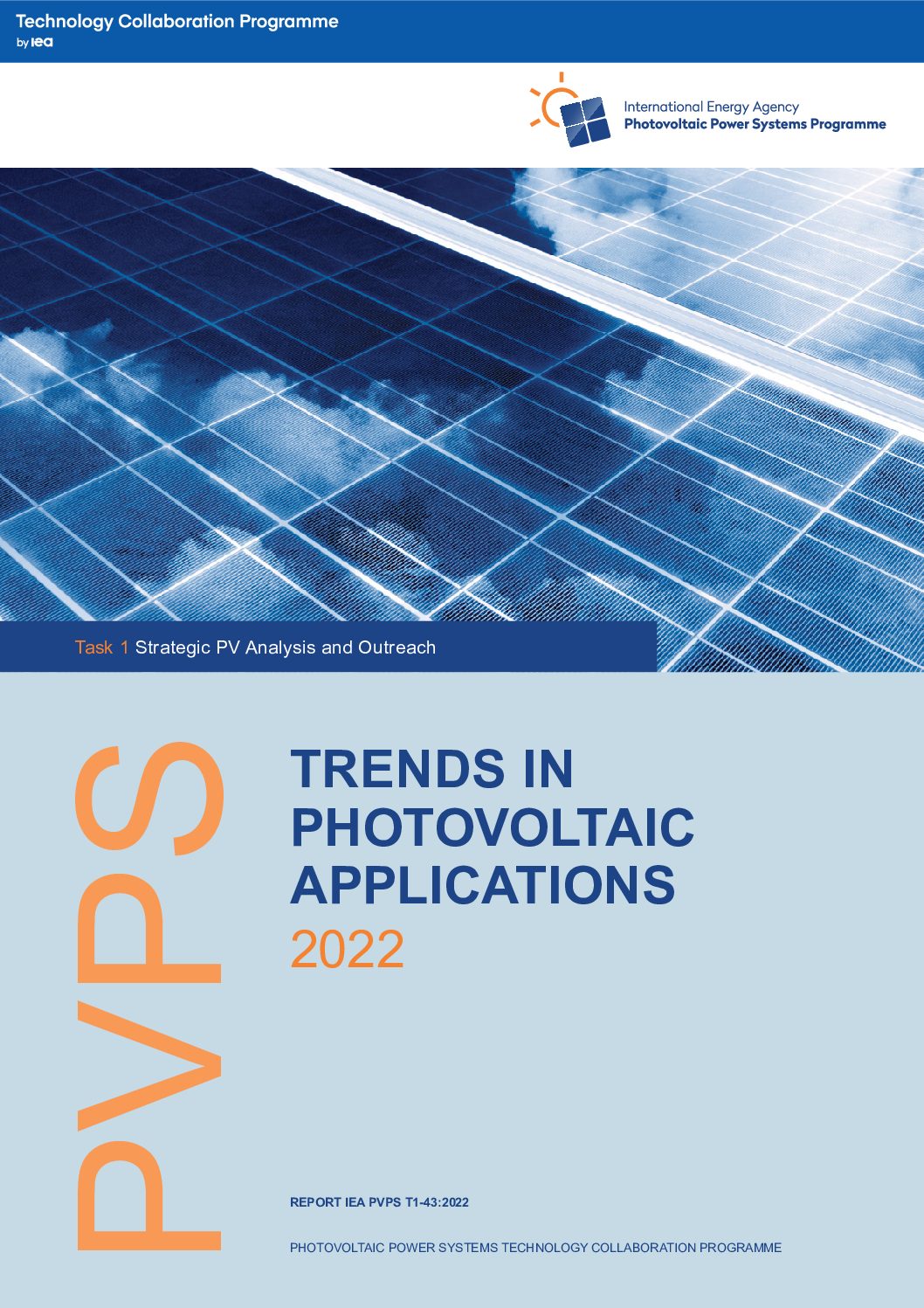For the 27th consecutive year, the IEA-PVPS Trends report is now available. This document provides the most comprehensive global overview of the development of the Photovoltaics sector, covering policies, drivers, technologies, statistics and industry analysis.
Highlights include:
- The market grew again to 174 GW in 2021 and even more was installed in 2022 despite the second year pandemic and despite the end-of-year disruptions in Asia.
- 945,7 GW of PV power plants were producing electricity worldwide at the end of the year, of which around 70% have been installed during the last five years
- China continues to drive the global PV market, but the EU, USA, India, and Japan also play a key role.
- PV development is now widespread across all continents, though Africa and some parts of Latin America, Europe and Asia are yet to embrace the solar-driven energy transition. 2021 closed with a record number of new countries installing significant numbers of PV
- Installations not financially supported and developed outside of tenders or similar schemes have been observed in an increasing number of countries in 2021. The growing competitiveness of solar PV electricity has also boosted the share of PV installations operating under self-consumption without any financial support mechanism
- With this broader integration, social acceptance of the energy transition is a major issue and is becoming a key subject for the development of PV
- The PV fleet at the end of 2021 saves 1060 million tons of CO2 equivalent annually, which is proportionally more than its share in the electricity mix. PV is a key tool to decarbonize the economy at large (not only the electricity sector), competitively enabling the shift from fossil fuels to electricity for transport and building applications.
- As the PV sector rapidly expands, it contributes increasingly to the global economy, including the creation of millions of jobs.
In summary, PV is now a mainstream source of electricity, at the core of the energy transition. While more is still required to efficiently tackle the challenges of climate change, the accelerating and unstoppable global development of PV presents an immediate pathway to decarbonization. This is not just a future prospect but a current reality in 2022
